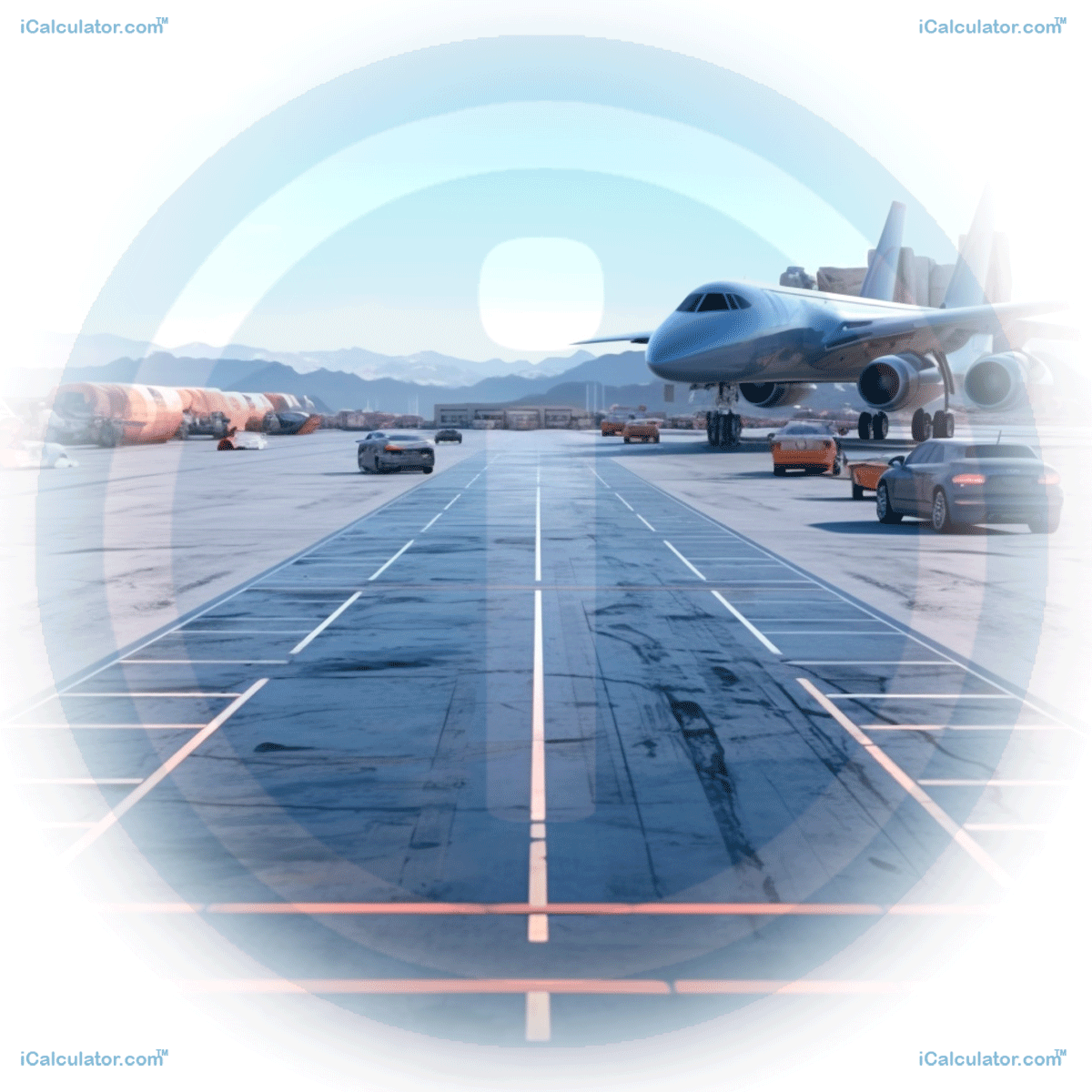Menu
Aeronautical Chart Scales And Miles Calculator
Please provide a rating, it takes seconds and helps us to keep this resource free for all to use

In the field of engineering, specifically aeronautical engineering and aviation navigation, understanding aeronautical chart scales is crucial. Aeronautical charts are maps used by pilots and air traffic controllers to navigate and monitor aircraft movement, respectively. These charts use different scales to represent actual distances. This tutorial explains the relationship between chart scales and distance in miles, along with the associated calculations.
| 1 to | |
| Nautical Miles Per Inch = |
| Statute Miles Per Inch = |
| Inches Per Nautical Mile = |
| Inches Per Statute Mile = |
| Feet Per Inch = |
Example Formula
Calculating actual distance based on aeronautical chart scales involves a simple formula derived from the definition of map scale:
- Actual Distance: This is the real-world distance being calculated.
- Chart Distance: This is the distance measured on the chart using a ruler or other measuring tool.
- Chart Scale: This is the scale of the chart, which is usually given in the format 1:X, where X is the number of units in the real world that one unit on the map represents.
Impact on Society
The ability to translate chart scales into actual distances has greatly shaped aviation technology and practices. It allows pilots to accurately plan flights, calculating fuel consumption, flight times, and alternative routes, which is crucial for safety, efficiency, and cost-effectiveness. Besides aviation, this principle is also relevant in fields such as cartography, geology, and environmental science.
Real Life Application in Industry
Apart from being a fundamental tool in aviation, the application of chart scale understanding is also vital in industries such as shipping and logistics, where precise navigation and route planning are essential. In addition, land management and conservation, geology, and urban planning are fields where accurate interpretation of map scales is necessary.
Key Individuals in the Discipline
The fundamental concept of map scales has been known since the time of ancient Greek cartographers, with significant contributions from individuals such as Ptolemy. However, in the context of aviation, pioneers like Charles Lindbergh, Amelia Earhart, and more recently, Burt Rutan, have continually pushed the boundaries of flight navigation and planning.
Interesting Facts
- The first aeronautical charts were created in the early 20th century, coinciding with the rapid development of aviation technology.
- Understanding chart scales is not only necessary for flight planning, but also for search and rescue operations, making it a critical skill in emergency situations.
- Advanced technologies, such as satellite-based GPS and digital maps, have revolutionized aviation navigation, but the fundamental understanding of chart scales remains a crucial skill for pilots.
Conclusion
Understanding aeronautical chart scales and how to convert them into actual distances is a critical skill in aviation and several other fields. It allows for precise planning and navigation, contributing significantly to the safety, efficiency, and effectiveness of various operations.
Engineering Calculators
You may also find the following Engineering calculators useful.
- Board Etch Run Impedance Calculator
- Tv Screen Size Calulator
- Parallel Resistor Calculator
- Isentropic Flow Relation Between Pressure And Total Pressure Calculator
- True Airspeed Calculator
- Transformer Capacity Calulator
- Temperature Rise In Pumps Calculator
- Caulking Usage Calculator
- Angular Deflection Of Hollow Shaft Calculator
- Air Conditioner Size Calculator
- Impedance And Resonant Capacitor For Coils Calculator
- Asphalt Volume Calculator
- Total Luminous Flux Calculator
- Concrete Wall Calculator
- Solid Round Tube Beams Deflection Calculator
- Concrete Slab Maximum Wall Load Calculator
- Mechanical Advantage Of A Lever Calculator
- Attic Fan Ventilation Calculator
- Electrical Admittance Calculator
- Speaker Decibel Power Change Calculator